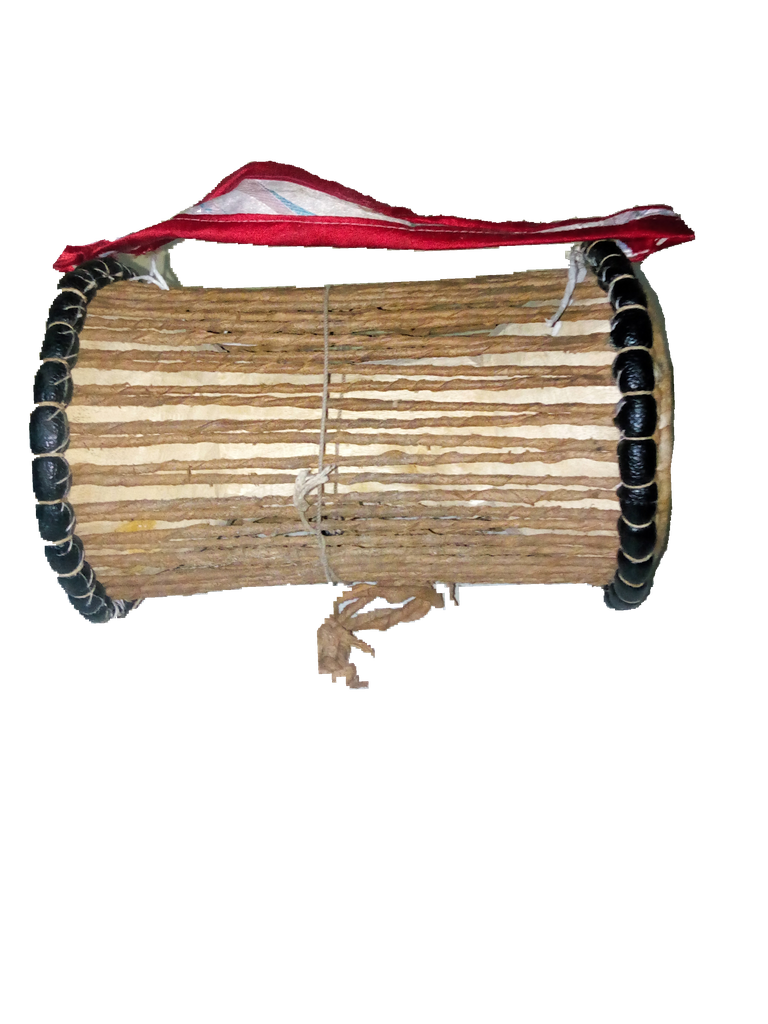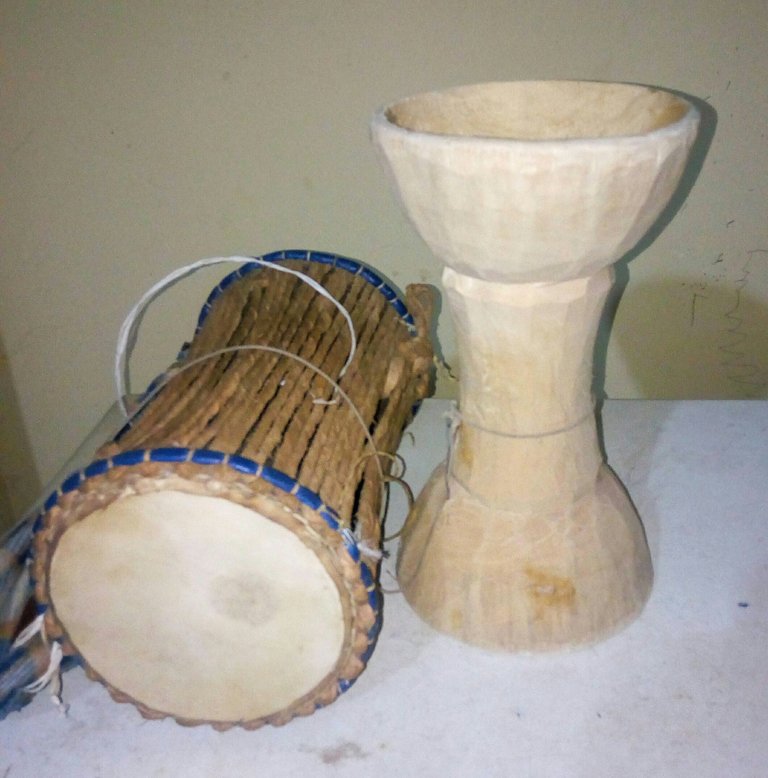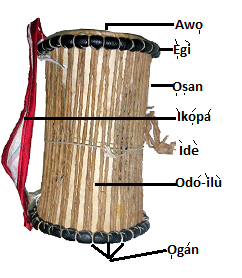
Introduction
Almost every drum talks in Yoruba land: from the deep vibrating sound of majestic gbè̩du drum to the thundering and slapping sound of bàtá; to the jingles-accompanied sonorous-plop sound of dùndún/Ìyá-ìlù, and further down to the “cooing” of Àpàlà drum under the armpit of a master drummer. Even the cone shaped gúdúgúdú regarded as the “father of drums” do speaks but only to the initiates among master dancers. A quick sweep at the Yoruba ensemble, one may be tempted to conclude that all membranophonic percussions are the only ones doing the talking according to Yoruba. For it seems s̩è̩kè̩rè̩, igbá, apé̩pé̩ stick-drum don’t talk - only agogo in this category rarely talks. However, one will have to contend with the drum of the sages, popularly call àgídìgbo with its xylophonic iron bar-plates or picks, before that thesis could sail through.
To “talk” in this context is to mimic human voice as close as possible, although parrots will do a better job. However, the fact is that drums don’t just “talk” like parrot, they speak wisdom through age old adage, pithy apothegms, slangs oven baked from the furnace of experience as well as instructions phono-encrypted for only the initiates into the cult of sounds.

Zeroing in on Apala Drum
Of all the talking drums in Yoruba land, it seems apala is the dear of many socialites and their musicians, although there was a hot rivalry between apala and sakara during the era of sakara and apala music, but the competition was won by àpàlà drum when Juju and Fuji musicians adopted apala drum and made it the lead drum during the 70s.
It is the most common of Yoruba drums nowadays, only to be followed by iya-ilu or dùndún. Perhaps, because of its portability and that it is easily manipulable to produce different pitch and intonations at a faster rate compared to others. Apala has enjoyed more acceptance from drummers especially those drumming for big musicians in Apala, Juju, Fuji and recently Hip-hop artistes in Nigeria have also joined in using it to season their percussion.


HOW APALA IS MADE
Awo̩ – hide. This is a specially made goat hide or that of cow foetus (actually, it is a young cow or the underside hide of a mature cow) that has been processed and the hair removed using tàgíìrì (Lagenaria breviflora), remaining the membranous sheet. Let us call it Type A hide
O̩s̩án – this is the leather rope that covers round the wooden frame longitudinally. It is made of differently processed whitish or cream colour hide, made into a long tape and fold inwardly into a long cord. Let us call it Type B processed hide.
Ìlè̩kè̩ – a woolly thread knot into a circle of about 5 inches in diameter or as may be determined by the circumference of the bulge of the wood cylinder.
Odó-ìlù – the hour-glass shaped, hollowed wood of about 11 inches length and 6 inches breadth at both ends. However, at the middle, it is about 3 inches. It serves as the frame for the drum.
O̩gán – a tiny slim thread made of Type A processed hide.
Abé̩ré̩ Ìpò̩rò̩ – hand needle used to stitch.
Ìgege or ìkeke – small sticks used to peg o̩s̩án to the circumference of one of the openings of odó-ìlù while the drum maker works on the other face.
Omi – water to soak the Type A processed hide
Okùn – thin twine to tie the drum in the middle to achieve variation in pitch
Ìkó̩pá – handle made of folded towel or ready-made handle.
Òrí – Shea-butter, to grease the circumference of the opening before sealing it with Type A hide.
È̩gì – suture holder or pad rope. It is made of Type B hide, but dyed into black colour and could come in different other colours. A long cloth is stuffed inside the leather covering and sutured into a long bulging rope.
Gum – this is any substance that could serve as adhesive. Resin or corn syrup is used in the olden days but gum is used nowadays.

PROCESS
Soak the awo̩ (Type A hide) for 5 to 10 minutes in water and squeeze thoroughly. Make sure it turns soft, a bit slippery and soaked.
Grease the circumference of the edge of the opening of the wooden frame round. Spread the now thoroughly squeezed awo̩ to cover the opening. Make sure at least the diameter of the hide is two inches greater than the diameter of the opening. Place the knotted wool tread call ìlè̩kè̩, (which can easily fit into the circumference of the wooden frame) on the covering awo̩ and wrap the awo̩ back on top of it. Then, using ogan as the threat of the needle, perforate the awo near the ileke, place the osan loop inside the needle, place the è̩gì pad rope on the osan at the foot of the needle and stitch the awo to the egi. Repeat this leaving an inch long space between the stitches. Also, peg the long end of the osan cord that is now spreading over the length of the wooden frame so that you can stretch the osan cord and use it again.
By the time you stitch round and back to the spot from which you started off, the drum will begin to take shape.

All pictures are owned by @ojebaba